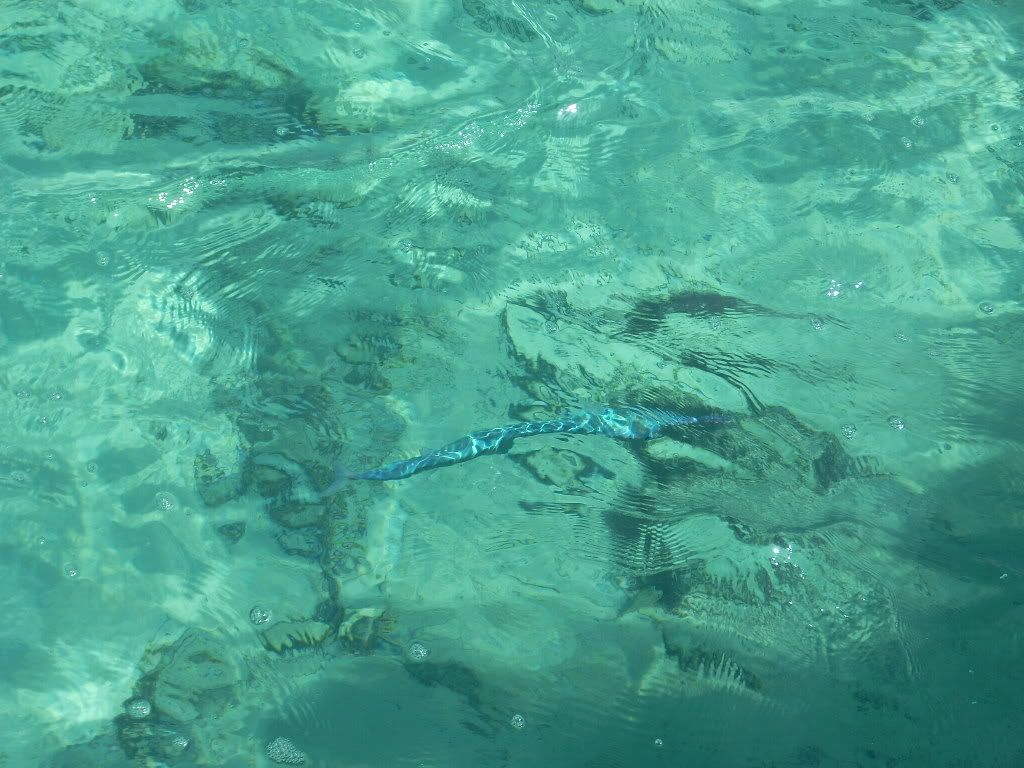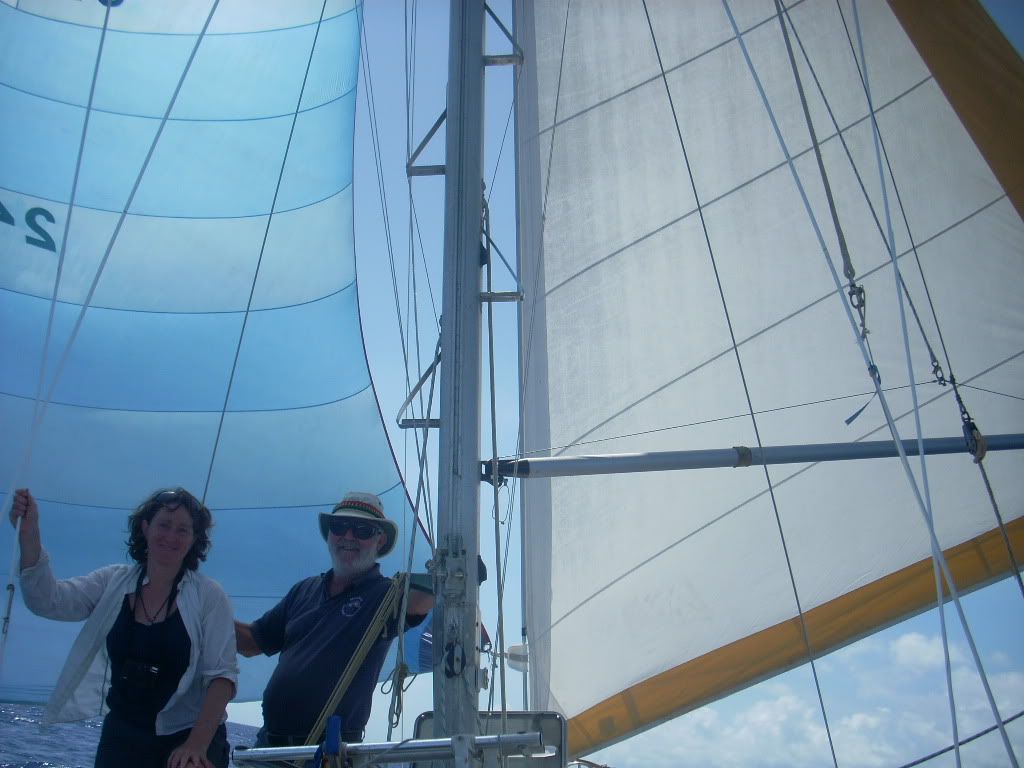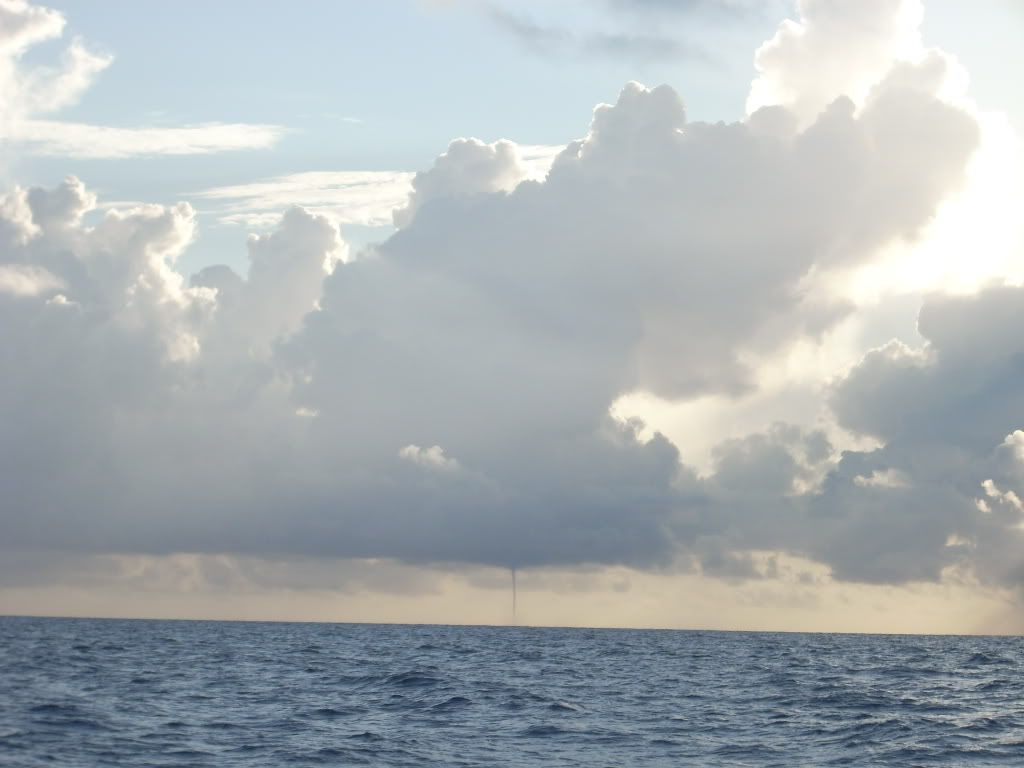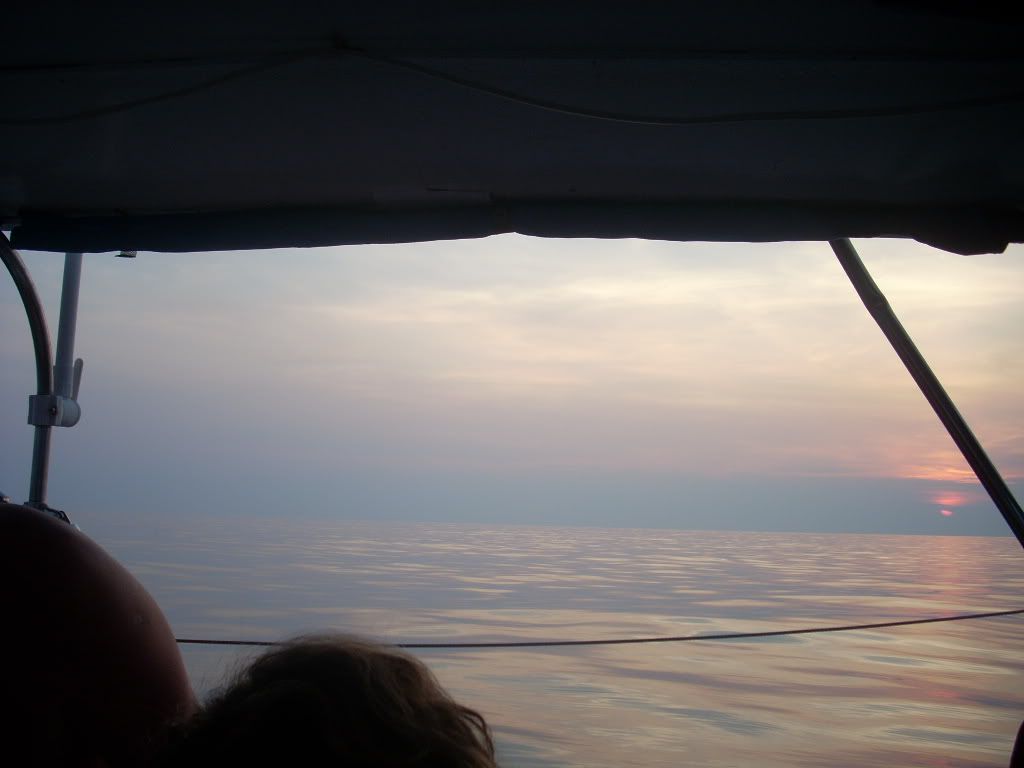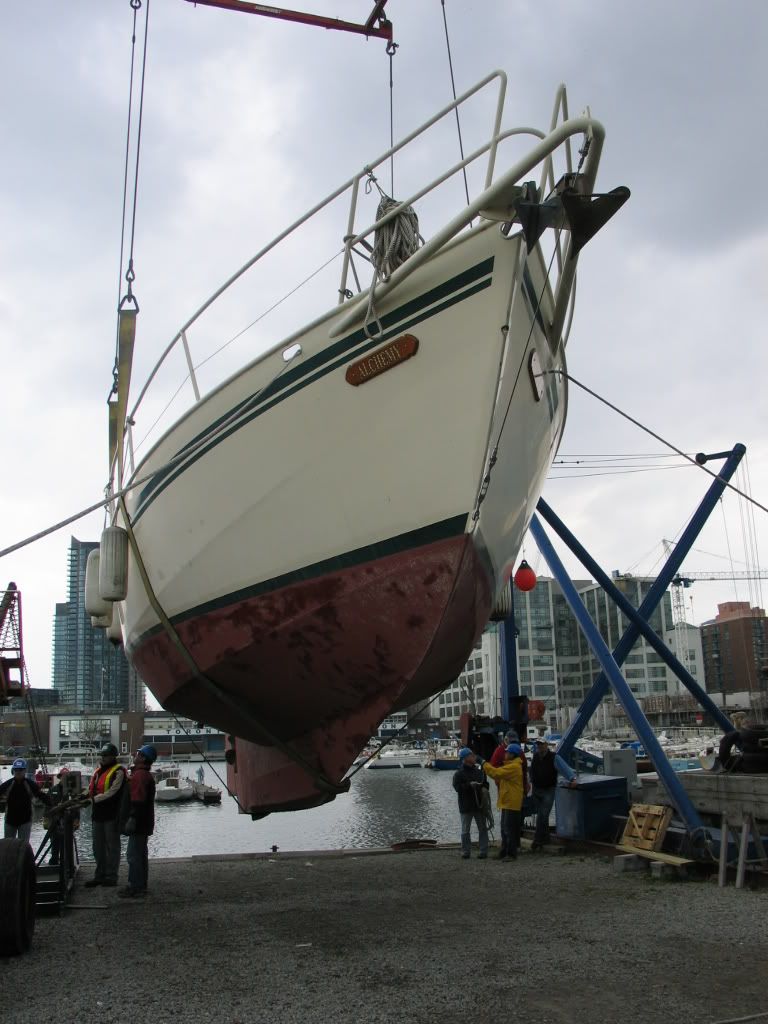
Here is a reasonably clear photo of Alchemy's anchors and the bowsprit rollers from which they are deployed and on which they are stowed. Basically, I'm on land this year (see previous posts), so they aren't deployed for any reason other than I don't want them on deck and I am clearing out the forepeak "workshop" for painting and modifications. They are currently a 33 lbs. CQR and a 45 lbs. CQR, appropriate for Lake Ontario and the ground conditions here. I carry some 200 feet of 3/8" chain and 300 feet of 1 inch nylon rode at the moment, but will go "all chain" before we leave, and after I install our Lofrans Tigre manual/electrical windlass.
Anchoring as a technique and anchors as devices are among the most divisive topics in cruising. Advocacy of one anchor type over another is quasi-religious, and the manufacturers of new styles of anchors, such as the Rocna, the Manson Supreme, the XYZ, the Raya, the Bulwagga and so on, make fairly aggressive claims, probably in an effort to overcome the generally conservative mindset of sailors for whom the Bruce anchor was a goddamn newfangled devil's hook back in the 1970s. Given that the 1930s-era CQR and Danforth anchors are still in the majority of cruisers (or so it seems), change comes hard to the world of recreational boating.
Those of us who see the current "star" anchors, the Rocna and the Manson Supreme, as functionally equivalent are learning a lot about the "special conditions", such as mud bottoms, that may be a factor in deciding to buy it. Now, we may never anchor in in the Chesapeake, but I can certainly see anchoring up river deltas, and this information is good to have. Also, there is a lot of auxiliary information about rode twist, the use of swivels and snubbers and bridles and kellets and floats, etc. that is great and essential information. I recommend, if I haven't already, Earl Hinz's The Complete Book of Anchoring and Mooring (http://www.amazon.com/Complete-Book-Anchoring-Mooring/dp/0870335391) as a great reference. Next to going out in heavy weather and seeing what holds you, mind.

To my mind, a coastal cruiser, unless mainly on the hook as a matter of course, is liable to have one main anchor and one "lunch hook", like a 20 lb. Danforth, say, on a 35 foot sailboat, unless local bottom condtions or powerful tides and currents dictate going "big" all the time. Such sailors must decide for themselves if the newer generation of anchors is appropriate, or worth the pretty steep cost or the sometimes onerous task of stowage (the newer anchors all seem quite large and awkward, if frequently less heavy than their older equivalents).
For me, readying for a circ, the situation is more ambiguous. I will carry perhaps five anchors in total, with two on the bowsprit and one at the stern "deployable" at any given time, and two in reserve for unusual conditions, like rocks or weeds, and as spares. Obviously, I will tend to have a "main" and it will tend to be larger, as the boat is going to be 34,000 lbs or so fully loaded, and I will tend to favour "one size up". So I am very much in the category of wanting both superior holding power and quick resetting. One way or another, I am likely to buy a largish, and quite likely a newer design. I will also use a bridle, snubbers and adequate, all-chain rode. Because I will have the capacity to carry it, I will have the tendency to deploy any and all means to aid whatever anchor I use to the best of my ability to accomplish the task of keeping the boat where I want it to be.
But I sure as hell won't be chucking my CQR or my Bruce. I know they work, and I can see in a protected or a calm situation just chucking them over with a rope rode because it will halve the time I spend retrieving and stowing them later. It's called a "main" anchor (formerly "best bower", I suppose!), but that doesn't necessarily mean it's the ground tackle most commonly deployed, at least aboard a passagemaker.
Anchor tests, of which I have read quite a few to this point, are a different beast. The "modern" anchors always seem to shine here, because they dig in so well that they don't break free until some truly awesome force (as measured by dynamometer) is applied.
I suppose if you are anchored in a wind tunnel, this is a meaningful test. But straight line pull tests are as limited as "gas mileage" tests...they never replicate the real, dynamic world!
Is the "best" anchor the one that holds fast in a situation that never occurs, such as a straight line reversal?
Or is an anchor that perhaps breaks free sooner in a straight line, but holds (and resets) quickly in a dynamic situation better?
Most anchoring most of the time is of the casual type. When an anchor fails this test, it's news. The sort of anchoring that is critical, such as during a prolonged squall with a wind shift, is less common, and one would hope that the anchor choice, if not the absolute best available, is picked at a weight, scope and known ability to reset after undergoing a jerking, shearing load such as a squall or a gusting wind shift combined with a confused sea state can produce.
All anchors can hold under the right conditions, and all anchors can fail under severe conditions. Certain anchors on certain bottoms are known to skip or otherwise fail to reset if broken free. This is why I don't know why I see really large Danforths, because I associate them closely with the "calm water/lunch hook" concept, but presumably in some bottoms they hold well enough and the folding aspect is attractive.
But there are still no shortcuts and no magic bullets.
I think that some of the newer designs have great promise and are continuing to build reputation based on real life use, not marketing and frankly not nearly useless tests of high artificiality. The suitability of the newer designs, however, does not render the older, proven models (Bruce, CQR, etc.) useless, ineffectual junk. There are cases for carrying them, I still think, and I am as yet unpersuaded that there is "one" do it all anchor. There may be one "do most of better, most of the time, in most of the bottom conditions, when sized up and bridled"... and we have two years to make that determination.
Speaking of anchors, I read a fascinating pictorial set in Antarctica in which the inventor of the Rocna anchor went for a pretty impressive cruise: http://www.petersmith.net.nz/photos/antarctica-1.php
His boat's about 10 feet bigger than ours and is aluminum. It looks pretty bloody capable and I'm going to steal some ideas!


